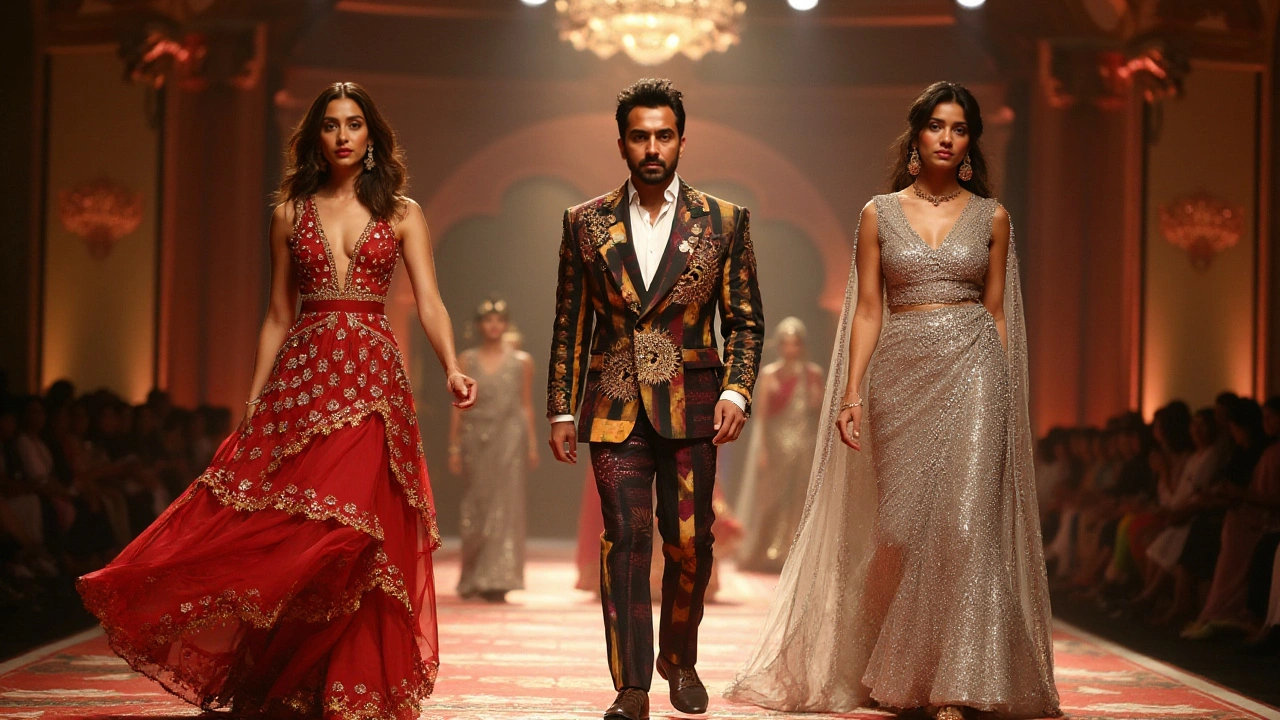Designer Outfits: Your Guide to Indian Fashion Trends
When styling designer outfits, high‑end, runway‑inspired garments that blend tradition with modern cuts. Also known as designer wear, they often pair with exquisite accessories to complete the look. Think of a sleek lehenga paired with a sparkling designer jewellery, crafted to echo the outfit’s silhouette and color palette or a contemporary suit matched with a delicate gold accessory, like a one‑gram gold chain that adds a luxe touch without heaviness. These elements form a style ecosystem where each piece influences the others.
One key insight is that designer outfits thrive on balance. A bold printed gown needs a subtle necklace, while a minimalist dress can handle a statement kada or a layered mangalsutra. This balance creates harmony – a core principle in Indian fashion where clothing and jewellery speak the same language. The right pair of earrings can highlight a neckline, just as a well‑chosen bindi can anchor a face‑framing hairstyle. When you understand how these parts interact, you can transform a simple look into a runway‑worthy statement.
Core Elements That Shape Designer Outfits
First, fabric choice matters. Silk, organza, and raw cotton each bring a distinct vibe, and designers pick them based on occasion and climate. Second, cut and silhouette drive the visual impact – flared lehengas, tailored blazers, or asymmetrical dresses each tell a different story. Third, colour palettes shift with seasons; pastel hues dominate summer while deep jewel tones dominate winter. Finally, accessories – from traditional mangalsutra to modern gold chains – act as the finishing brushstroke. Together they create an outfit that feels both personal and on‑trend.
Our collection of articles below dives deep into each of these topics. You’ll find a breakdown of the best Indian dress‑shopping apps, a guide to choosing the ideal mangalsutra, and tips on spotting high‑quality jewellery that holds its value. There’s also a look at gold price differences between India and the USA, and a fresh take on 2025 jewellery trends. All these pieces share a common thread: they help you pair the perfect accessory with your designer outfit.
Another important connection is the cultural context. In many Indian weddings, the designer outfit isn’t just about style; it signals status, family heritage, and regional identity. For example, a Punjabi bride may choose a heavily embroidered lehenga with a gold kada, while a South Indian bride might prefer a silk sari complemented by a delicate gold necklace. Understanding these nuances lets you choose an outfit that respects tradition while showcasing personal flair.
Practical styling tips also revolve around event type. For a formal gala, opt for a statement necklace and a matching cuff; for a casual brunch, a simple gold chain with a lightweight kurti works better. When you know the occasion, you can select the right level of sparkle. Our post on “Diamond Prices India vs USA” helps you decide whether to invest in a diamond‑set piece or stick with gold‑based accessories, keeping budget and style in sync.
Finally, remember that designer outfits are evolving. 2025 trends point toward sustainable fabrics, mixed metal jewellery, and layered looks that blend vintage pieces with modern cuts. Keep an eye on emerging styles, and don’t be afraid to mix and match – a contemporary blazer over a traditional sari, paired with a minimalist gold chain, can turn heads and start conversations.
Ready to explore more? The articles ahead will give you deeper insight into shopping apps, jewellery quality, gold investment tips, and cultural customs that shape every designer outfit. Dive in and discover how to build a wardrobe that’s both stylish and meaningful.
